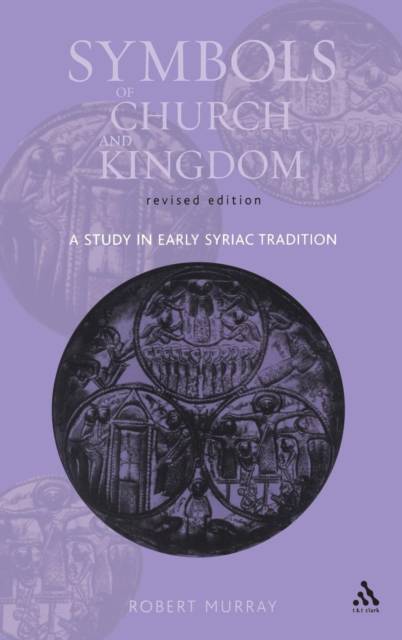
Je cadeautjes zeker op tijd in huis hebben voor de feestdagen? Kom langs in onze winkels en vind het perfecte geschenk!
- Afhalen na 1 uur in een winkel met voorraad
- Gratis thuislevering in België vanaf € 30
- Ruim aanbod met 7 miljoen producten
Je cadeautjes zeker op tijd in huis hebben voor de feestdagen? Kom langs in onze winkels en vind het perfecte geschenk!
- Afhalen na 1 uur in een winkel met voorraad
- Gratis thuislevering in België vanaf € 30
- Ruim aanbod met 7 miljoen producten
Zoeken
Symbols of Church and Kingdom - New Edition
A Study in Early Syriac Tradition
Robert Murray
Hardcover | Engels
€ 373,45
+ 746 punten
Omschrijving
A new edition of the study of Syriac Christianity up to the early fifth century CE: its beliefs and worship; its life and art.
In this classic work, Robert Murray offers the fullest and most vivid picture yet available of the development and character of the culture, illustrating both its original close relationship to Judaism and its remoter background in Mesopotamian civilization. He is interested in the subsequent influence of Syriac Christian culture, particularly on European literature.
The largely revised Introduction (now assisted by a sketch map) locates Syriac as an Aramaic dialect, then traces the origins of Syriac Christianity, its relationship to Jewish Christianity and the Syriac Bible version, the character of Syriac asceticism (including Marcionism and Manichaeism), and of the Christian schools. Key Syriac terms are explained, and all citation of Syriac texts throughout the work are given in translation either by other scholars or by the author.
The second part of the introduction reviews the literature studied in the following chapters, concentrating on Aphrahat and Ephrem. In both parts, a number of positions adopted in the first edition are revised in the light of recent studies, the bibliographical details of which are given in the greatly increased number of footnotes.
This book deals with a topic of interdisciplinary importance, at the cultural crossroads of the ancient and medieval worlds of east and west, and of Christianity, Judaism and Islam. It will be of interest to a wide range of scholars and students.
In this classic work, Robert Murray offers the fullest and most vivid picture yet available of the development and character of the culture, illustrating both its original close relationship to Judaism and its remoter background in Mesopotamian civilization. He is interested in the subsequent influence of Syriac Christian culture, particularly on European literature.
The largely revised Introduction (now assisted by a sketch map) locates Syriac as an Aramaic dialect, then traces the origins of Syriac Christianity, its relationship to Jewish Christianity and the Syriac Bible version, the character of Syriac asceticism (including Marcionism and Manichaeism), and of the Christian schools. Key Syriac terms are explained, and all citation of Syriac texts throughout the work are given in translation either by other scholars or by the author.
The second part of the introduction reviews the literature studied in the following chapters, concentrating on Aphrahat and Ephrem. In both parts, a number of positions adopted in the first edition are revised in the light of recent studies, the bibliographical details of which are given in the greatly increased number of footnotes.
This book deals with a topic of interdisciplinary importance, at the cultural crossroads of the ancient and medieval worlds of east and west, and of Christianity, Judaism and Islam. It will be of interest to a wide range of scholars and students.
Specificaties
Betrokkenen
- Auteur(s):
- Uitgeverij:
Inhoud
- Aantal bladzijden:
- 432
- Taal:
- Engels
Eigenschappen
- Productcode (EAN):
- 9780567081575
- Verschijningsdatum:
- 9/12/2004
- Uitvoering:
- Hardcover
- Formaat:
- Genaaid
- Afmetingen:
- 162 mm x 236 mm
- Gewicht:
- 752 g

Alleen bij Standaard Boekhandel
+ 746 punten op je klantenkaart van Standaard Boekhandel
Beoordelingen
We publiceren alleen reviews die voldoen aan de voorwaarden voor reviews. Bekijk onze voorwaarden voor reviews.









